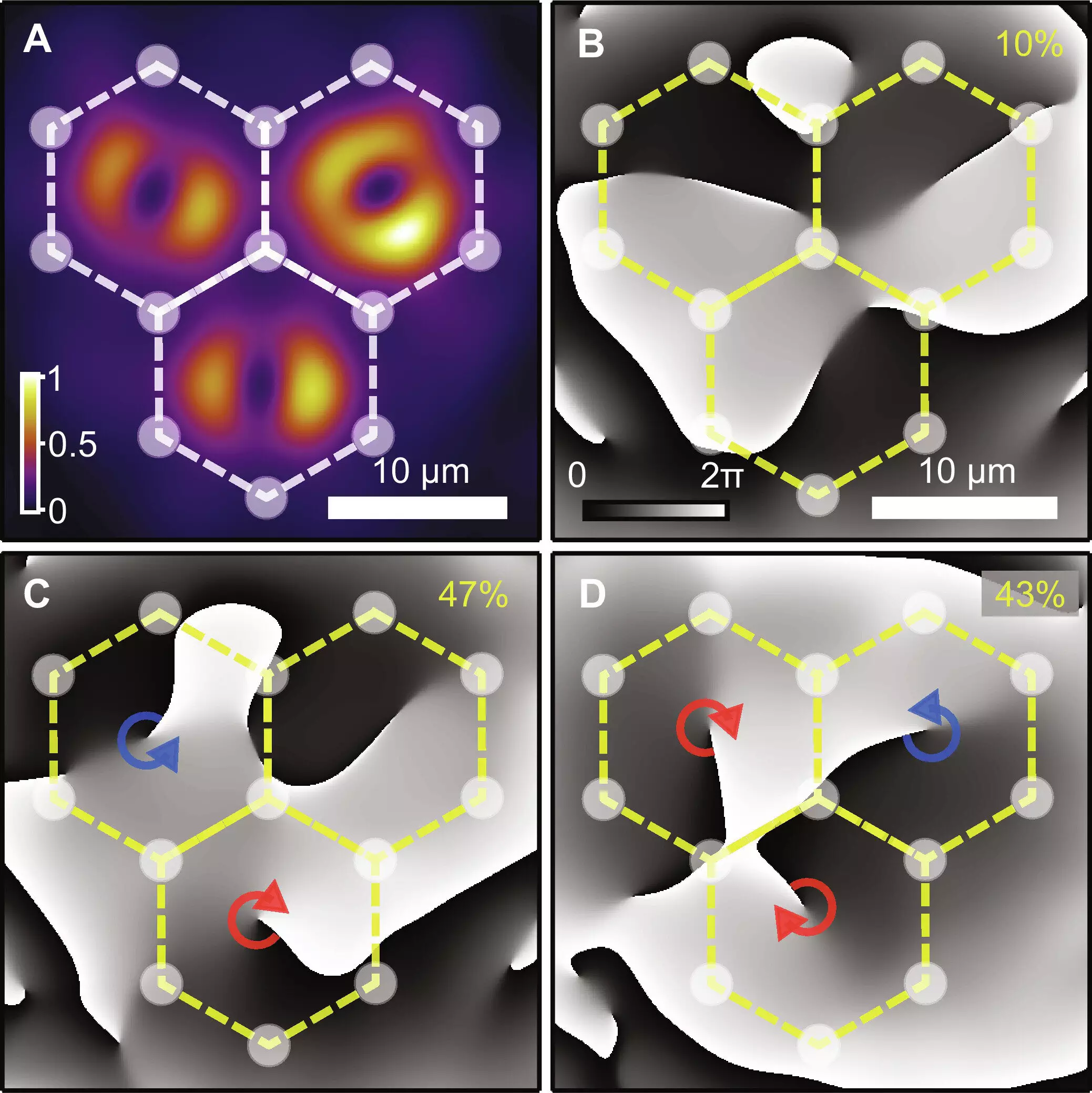The recent research conducted by an interdisciplinary team from Skoltech, Universitat Politècnica de València, Institute of Spectroscopy of RAS, University of Warsaw, and University of Iceland has shed light on the spontaneous formation and synchronization of multiple quantum vortices in optically excited semiconductor microcavities. This groundbreaking study, published in Science Advances, explores the intriguing behavior of polariton quantum vortices within optically generated lattices, revealing a unique phenomenon of “antiferromagnetic coupling” between neighboring vortices.
One of the key findings of this research is the development of optically structured artificial lattices comprised of coupled polariton vortices, presenting a novel platform for investigating and simulating condensed matter systems. By leveraging the orbital angular momentum of the polariton condensate, these artificial lattices offer a new avenue for studying complex quantum phenomena typically associated with spin angular momentum in condensed matter physics.
The experimental setup utilized in this study involved a semiconductor planar microcavity, consisting of highly reflective mirrors enclosing InGaAs quantum wells. Through strong light-matter coupling, exciton-polaritons were created within the microcavity, forming coupled states of excitons and confined cavity photons. The researchers employed spatial light modulation techniques to excite the semiconductor microcavity sample with a patterned laser beam, generating a hexagonal lattice of tightly focused Gaussian beams.
Upon varying the lattice parameters and adjusting the excitation power, the researchers observed the condensation of polaritons inside the cells of the lattice. In individual lattice cells, polariton condensates exhibited both vortex and antivortex states with equal probabilities, indicating a balanced distribution of topological charges. However, in neighboring cells, the vortices interacted to form stable solutions with opposite topological charges, creating vortex-antivortex or antivortex-vortex pairs.
The analysis of a large experimental dataset posed a significant challenge for the researchers, requiring a thorough statistical evaluation to substantiate their findings. Theoretical insights provided by Dr. Helgi Sigurðsson from the University of Warsaw suggested the presence of extended antiferromagnetic order within the triangular lattice of vortices. By measuring the vortex charge of each condensate and examining correlations with the Ising spin Hamiltonian, the researchers confirmed the presence of antiferromagnetic coupling in the observed vortex lattice.
The discovery of synchronized quantum vortices and their antiferromagnetic coupling opens up exciting possibilities for future research in the field of exciton-polariton systems. By harnessing the unique properties of coupled polariton vortices in artificial lattices, researchers can delve deeper into the dynamics of quantum phenomena and explore new avenues for quantum simulation and emulation of condensed matter systems.
The collaborative efforts of researchers from various institutions have unraveled a fascinating phenomenon in optically excited semiconductor microcavities, paving the way for further exploration of quantum vortices and their potential applications in quantum technologies. This study not only advances our understanding of complex quantum systems but also underscores the importance of interdisciplinary research in pushing the boundaries of scientific discovery.


Leave a Reply